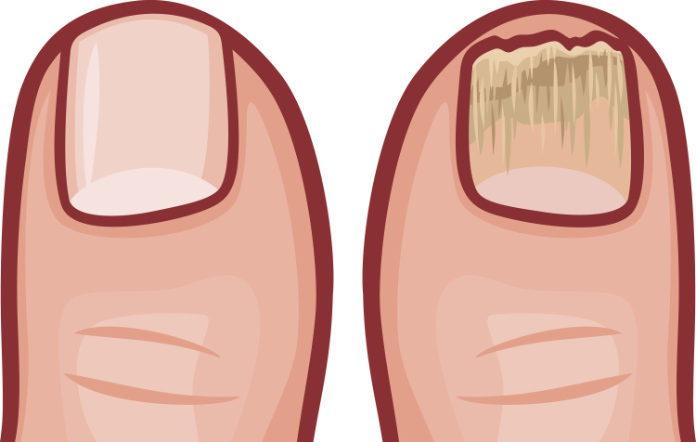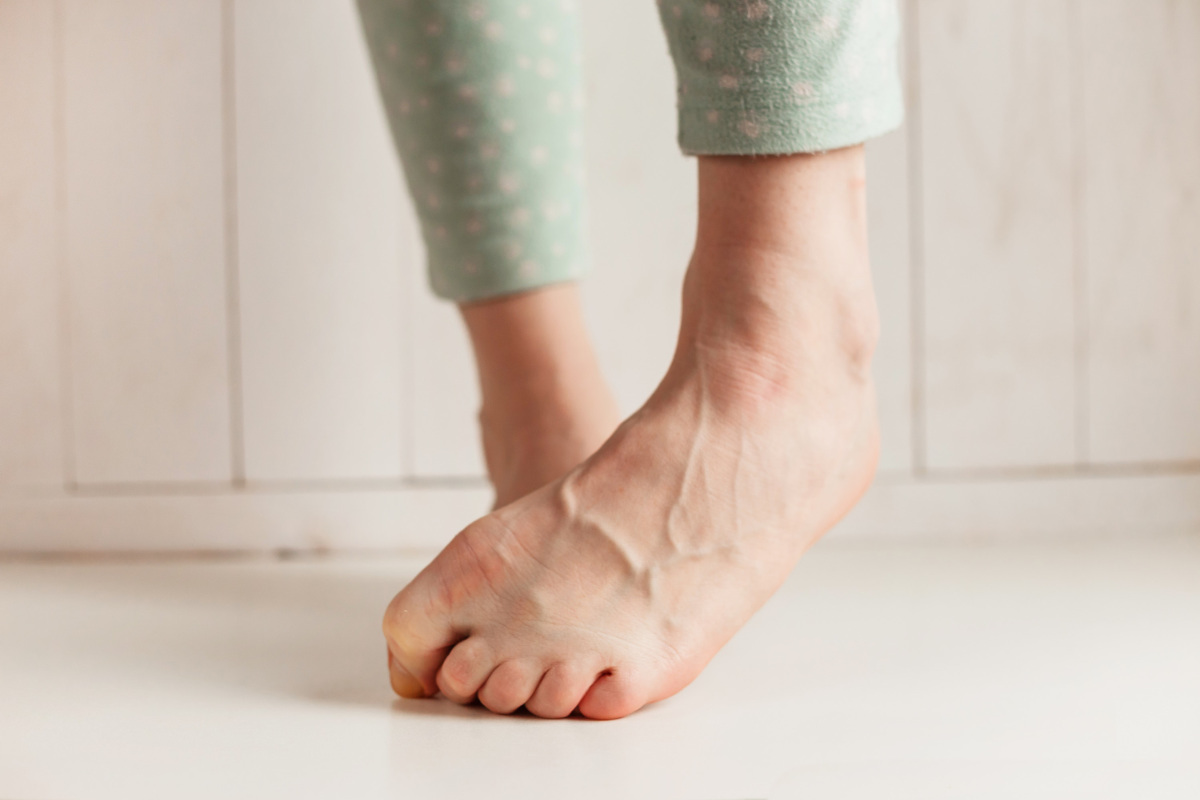A fungal nail infection might seem very minor in the grand scheme of health conditions – but these stubborn infections can really have an impact.
Caused by fungi that often live harmlessly on the skin (and usually the same fungus that causes athlete’s foot) multiplying and infecting the nail, the main symptom is a discoloured nail (it usually turns yellow, though may also turn white, black and even green). The nail can also become thick and distorted, very brittle and crumbly, plus uncomfortable and sore.
Anyone can potentially get a fungal nail infection, but some can be more prone to them, including older people with poor circulation, those with diabetes or a compromised immune system, or who have difficulty caring for their feet. Exposure to the fungus and hygiene habits play a huge role however.

Toes tend to be affected most, and fungal nails are considered one of the ‘most embarrassing’ foot conditions, according to a survey by Canespro, with 33% of sufferers admitting the cosmetic elements were the worst part. More than a quarter (28%) said they worry about people commenting on their nails, and half (48%) confess the infection bothers them.
The emotional impact of a fungal nail infection
“Individuals with a fungal nail infection are often very embarrassed and don’t let their feet and hands be seen in public. Concerns about transmitting the infection to their friends, family and co-workers can cause significant stress and personal anxiety,” says microbiologist Professor Val Edwards-Jones.
The Canespro survey, which polled 2,000 sufferers, found it’s not unusual for people affected to want to keep their nails hidden, with 23% saying they don’t even want to be barefoot in their own home.
Of course, keeping your toes hidden 100% of the time isn’t always practical especially if you are planning on heading to the beach this summer.

Fungal nails can be a stubborn problem
For more than a third of those affected, fungal nails are a recurrent problem and on average, an infection will last 12 months. But there are usually a number of reasons for this.
A fungal nail infection won’t generally go away without treatment. It’ll only stop once the nail is destroyed. Podiatrist Dina Gohil adds: “Many don’t realise that fungal nail is a very common condition, with one in 10 people suffering from the infection at some point in their lives. Many sufferers feel self-conscious when it comes to their feet and often cause more damage by repeatedly painting over the problem, often leaving it untreated for years.”
A large proportion of people (43%) wrongly believe the infections will eventually clear up by themselves, and one in five admit they’re too embarrassed to seek help for it. Not only does this mean the infection’s more likely to linger, but it increases the chances of it being passed on to others too.
Treating a fungal nail infection
Dina stresses that fungal nail infections are treatable, and suffering with them for months or years “shouldn’t be the case”, stating: “[They] can be treated with the right care, saving years of pain and embarrassment. If you notice symptoms, effective treatments are available from your local pharmacy, where you can also speak to your pharmacist for advice and recommendations before the condition worsens.”
And if it does worsen, or self-treating isn’t proving effective, talk to your GP – they might have further advice.
It’s also important to be aware of how the infections are spread, what hygiene factors may be playing a part, and whether you’re doing all you can to tackle the spread of fungi spores in your home.
Avoiding a fungal nail infection
We’ve probably all been guilty of neglecting our feet from time to time. In fact, 64% admit to not thinking of foot care as a priority, while 38% confess it’s a case of out of sight, out of mind – as it’s so easy to keep feet hidden.
Fungal nail breeds in moist and closed-in environments – and of course, anywhere that hot, sweaty feet are exposed and in contact with surroundings might be a breeding ground such as gym changing rooms.

A study revealed the fungus can linger on hotspots in the home as well, such as carpets and bathroom mats, after somebody with the infection’s had barefoot contact with them. Socks, shoes, towels and laundry can also be an issue, along with things like nail-clippers and scissors. These items should be regularly cleaned – and given a deep-clean after the infection’s been treated too, to ensure it’s gone for good.
Dr Lisa Ackerley, chartered environmental health practitioner, says: “In our experiment, even items deemed as clean, such as the washing machine seal and freshly washed socks, tested positive for several fungal species. If washed at low temperatures, fungus may still be present and contribute to a cycle of infection, so sufferers should wash infected laundry, eg. towels and linen, on a 90°C wash, which has the combined benefit of cleaning the machine.”

Anti-fungal carpet sprays and cleaning sprays can help for bathrooms and floors, and those with an infection might want to wear flip-flops around the house.
Good hygiene is paramount, which means keeping feet clean and dry, not sharing socks or footwear, never wearing unwashed socks, and avoid things like wearing shoes without socks (34% of respondents in the Canespro poll confessed they wear shoes without socks). Old, sweaty trainers can also play a part in recurring infections, and it might be a good idea to invest in a new pair once fungal nails are treated.
Read more – What is athlete’s foot – and how to treat and prevent it?































































